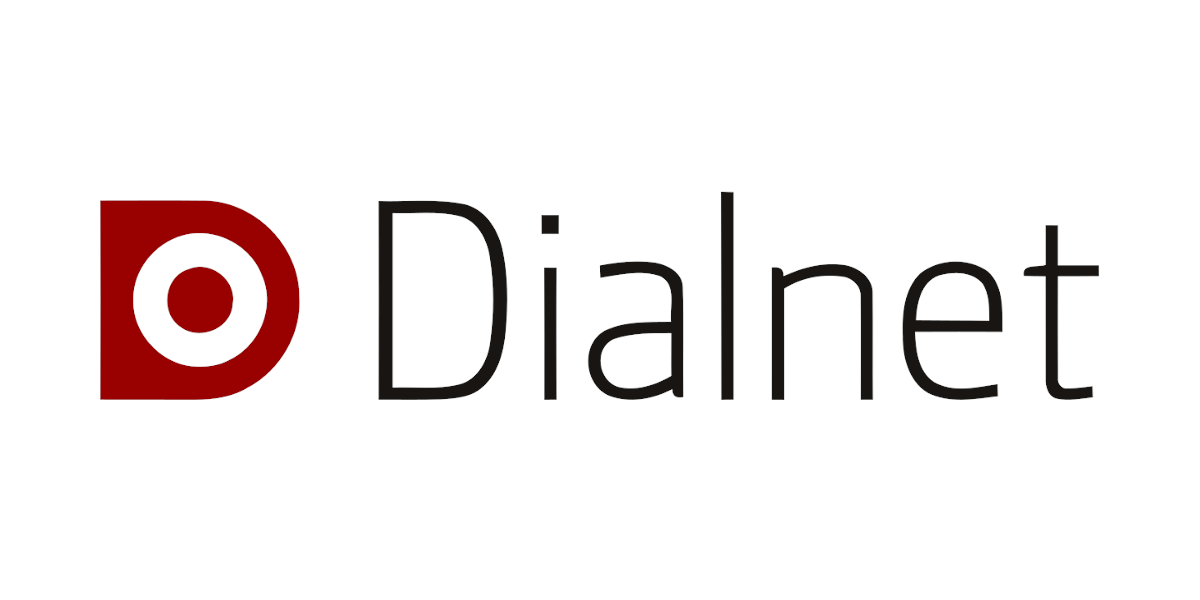"A Dictionary should not close its eyes to reality". Metaphors on language and ideology within academic language columnism
Abstract
The use of figurative language presupposes a high level of reflexivity about language –hence its metalinguistic nature –and always operates in a given social and linguistic context. It is this last aspect that provides an ideological dimension to the use of certain resources. Indeed, different authors (Goatly, 2007; Bernel, 2007) have highlighted the argumentative functionality of metaphors insofar as they provide a scenario of understanding –domains of origin– which, in some way, condition the way in which a certain concept is to be received by speakers. The aim of this work is to analyse the discursive functionality of metalinguistic metaphors in a corpus of texts made up of columns about language written by academic authors. The work shows the role played by metaphors as argumentative elements, the extent to which they contribute to the construction of a specific way of presenting language and, consequently, their contribution to the transmission of an imaginary about language and about the Academy that justifies the institutional activity in which they are involved.
Downloads
References
Aznárez Mauleón, M. (2006). La fraseología metalingüística con verbos de lengua en español actual. Berlin, Peter Lang
Bermel, N (2007). Metaphor and the conceptualization of language. En Bermel, N. Linguistic authority, language ideology, and metaphor: The czech orthography wars (pp. 262-291). Berlin, Mouton de Gruyter. DOI:
https://doi.org/10.1515/9783110197662
Caffi, C. (1994). Metapragmatics. En Asher, R. E. (Ed.), Encyclopedia of language and linguistics (pp. 2461-2466). Oxford, Pergamon. DOI: https://doi.org/10.1016/0378-2166(94)90110-4
Cameron, D. (1995). Verbal Hygiene. London, Routledge.
Cellard, K. y Larose, K. (2010). La langue au quotidien. Les intellectuels et le français dans la presse québécoise, anthologie. Vol. 1. Les douaniers de la langue (1874-1957). Québec, Éditions Nota bene.
Ciapuscio,G. (2013). Las metáforas en las cartas de lectores de revistas científicas. Rétor. Revista de Retórica, 3(2), pp. 168-176. Recuperado de: http://revistaretor.org
Del Valle, J. (2011). Panhispanismo e hispanofonía: breve historia de dos ideologías siamesas. Sociolinguistic Studies, 5(3), pp. 465-484. DOI: https://doi.org/10.1558/sols.v5i3.465
Fabré, G. (2012). Des métaphores sur la langue. Note Critique de Cellard-Larose, La langue au quotidien. Recherches sociografiques, LII(1), pp. 201-2012. DOI: https://doi.org/10.7202/1008926ar
Fernández Bernárdez, C. (2002). Expresiones metalingüísticas con el verbo 'decir'. A Coruña, Universidade da Coruña.
Fernández Marrero, J. J. (1999). Actividad normativa y conciencia lingüística. Técnicas de control de las evaluaciones populares. En Perl, M. y Pörtl, K. (Eds.), Identidad cultural y lingüística en Colombia, Venezuela y en el caribe Hispánico. (pp. 175-186). Tübingen, Max Niemeyer.
Goatly, A. (2006). Ideology and Metaphor. English Today, 87(22), 3, pp. 25-38. DOI: https://doi.org/10.1017/S0266078406003051
Goatly, A. (2007). Washing the Brain: Metaphor and Hidden Ideology. Amsterdam, John Benjamins Publishing. DOI: https://doi.org/10.1075/dapsac.23
Hart, C. (2008). Critical Discourse Analysis and Metaphor: toward a theoretical framework. Critical Discourse Analysis, 5(2), pp. 91-106. DOI: https://doi.org/10.1080/17405900801990058
Jernudd, B. y Shapiro, M. (1989). The politics of language purism. Berlin, Mouton de Gruyter. DOI: https://doi.org/10.1515/9783110868371
Lakoff, G. y Johnnson, M. (1995 [1980]). Metáforas de la vida cotidiana, Madrid, Cátedra.
Ludwig, R. (2000-2001). Desde el contacto hacia el conflicto lingüístico: el purismo en el español. Concepto, desarrollo histórico y significado actual. BFUCh, XXXVII, pp. 167-196.
Manero, E. (2005). Aproximación a un estudio del refrán. El refranero español de contenido metalingüístico. Pamplona, Universidad de Navarra.
Marimón Llorca, C. (2018). La Academia española trabaja. Actitudes lingüísticas y estrategias valorativas en las Columnas sobre la Lengua (CSL). Cuadernos ASIPI, 12, pp. 169-190.
Marimón Llorca, C. (2019). Las columnas sobre la lengua, entre la norma lingüística y el uso real. En Poch, D. (Ed.), El español de Cataluña en los medios de comunicación (pp. 9-25), Madrid-Frankfurt, Iberoamericana-Vervuert.
Marimón Llorca, C. (2021, en prensa). The battle on language revisited. Metalinguistic metaphors in informative speech about feminist language. En Mateo, J. y Yus, F. (Eds.) Metaphor and specialized discourse. Berlin, Peter Lang.
Marques, J. G. (2011). Normas linguísticas e purismo: algumas observações críticas. Recorte, 8(1), pp. 1-15.
Moreno Cabrera, J. C. (2014). Imágenes y metáforas de la comunicación lingüística. En Tordesillas, M y Suárez, P. (Eds.), Miradas científicas en torno… al lenguaje: lenguaje, lengua ydiscurso: diálogos internacionales e interdisciplinares (pp. 57-80). Zaragoza, Pórtico.
Musci, M. (s.a.). Explicar, identificar, persuadir, confrontar: qué hacen las metáforas en el discurso de la lingüística. Recuperado de: https://aledar.fl.unc.edu.ar/files/Musci-Monica1.pdf
Olza Moreno, I. (2011). Corporalidad y lenguaje: La fraseología somática metalingüística del español. Berlin, Peter Lang.
Rey-Debove, J. (1997). Le Métalangage. Paris, Armand Collin.
Reyes, G. (2002). Metapragmática: lenguaje sobre lenguaje, ficciones, figuras. Valladolid, Universidad de Valladolid.
Rojas, D. y Avilés, T. (2014). Ideologías lingüísticas en la fraseología del español de Chile: dos momentos, una concepción del lenguaje. Onomázein ,29, pp. 64-77. DOI: https://doi.org/10.7764/onomazein.29.3
Santibáñez, C. (2009). Metáforas y argumentación: Lugar y función de las metáforas conceptuales en la actividad argumentativa. Signos, 42(70), pp. 245-269. DOI: https://doi.org/10.4067/S0718-09342009000200005
Selden, R. (2010). Historia de la crítica literaria del siglo XX. Del formalismo al postestructuralismo. Madrid, Akal.
Silverstein, M. (1993). Metapragmatic discourse and metapragmatic function. En Lucy J. H. (Ed.), Reflexive language. Reported speech and metapragmatics (pp. 33–58). Cambridge, Cambridge University Press. DOI: https://doi.org/10.1017/CBO9780511621031.004
Soriano Salinas, C. (2012). La metáfora conceptual. En Ibarretxe-Antuñano, I. y Valenzuela, J. (Eds.), Lingüística Cognitiva (pp. 87-109). Barcelona, Anthropos.
Spang, K. (1979). Fundamentos de retórica. Pamplona, EUNSA.
Spillner, B. (1979). Lingüística y literatura. Madrid, Gredos.
Sweetser, E. (1992). English Metaphors for Language: Motivations, Conventions, and Creativity. Poetics Today, 13(4), pp. 705-724. DOI: https://doi.org/10.2307/1773295
Underhill, J. (2012). Creating Worldviews. Metaphor, Ideology and Language. Edinburg, University Press.
Ungerer, F. & Schmid, H. J. (1996). An Introduction to Cognitive Linguistics. London, Longman.
Van Dijk Teun. A. (2008). Semántica del Discurso e Ideología. Discurso y Sociedad, 21(1), pp. 201-261.
Villa, M. E. (2018). Las metáforas en la lingüística. Análisis de algunas conceptualizaciones metafóricas de los fenómenos lingüísticos. Círculo de lingüística aplicada a la comunicación, 73, pp. 303-314. DOI: https://doi.org/10.5209/CLAC.59071
Walsh, O. y Cotelli, S. (2021, en prensa). Les métaphores dans les chroniques de langage en France et en Suisse. En Marimón Llorca, C., Remysen, W. y Rossi F. (Eds.), Le ideologie linguistiche: dibattiti, purismi e strategie discorsive. Frankfurt, Peter Lang.
Copyright (c) 2020 Carmen Marimón Llorca

This work is licensed under a Creative Commons Attribution 4.0 International License.
Texts in Process (TEP) is a non-commercial open-access scholarly journal governed by a Creative Commons Recognition 4.0 International license. It follows a full and unrestricted open access, without charges or fees for shipping, reviewing, processing and publishing articles. Users can read, download without registering, distribute, print or link the complete texts of numbers and articles, without the permission of the editors or authors. There is also no charge to publish (APCs), being applicable to the entire editorial process. The authors retain their intellectual rights at all times.
ASICE-EDICE Programme has always believed that non-commercial, open, unlimited and unrestricted access to specialized academic publications is a vehicle for academic freedom and scientific rigor. It adheres and shares the Declaration of Mexico and DORA to guarantee the protection of academic and scientific production in Open Access.

















